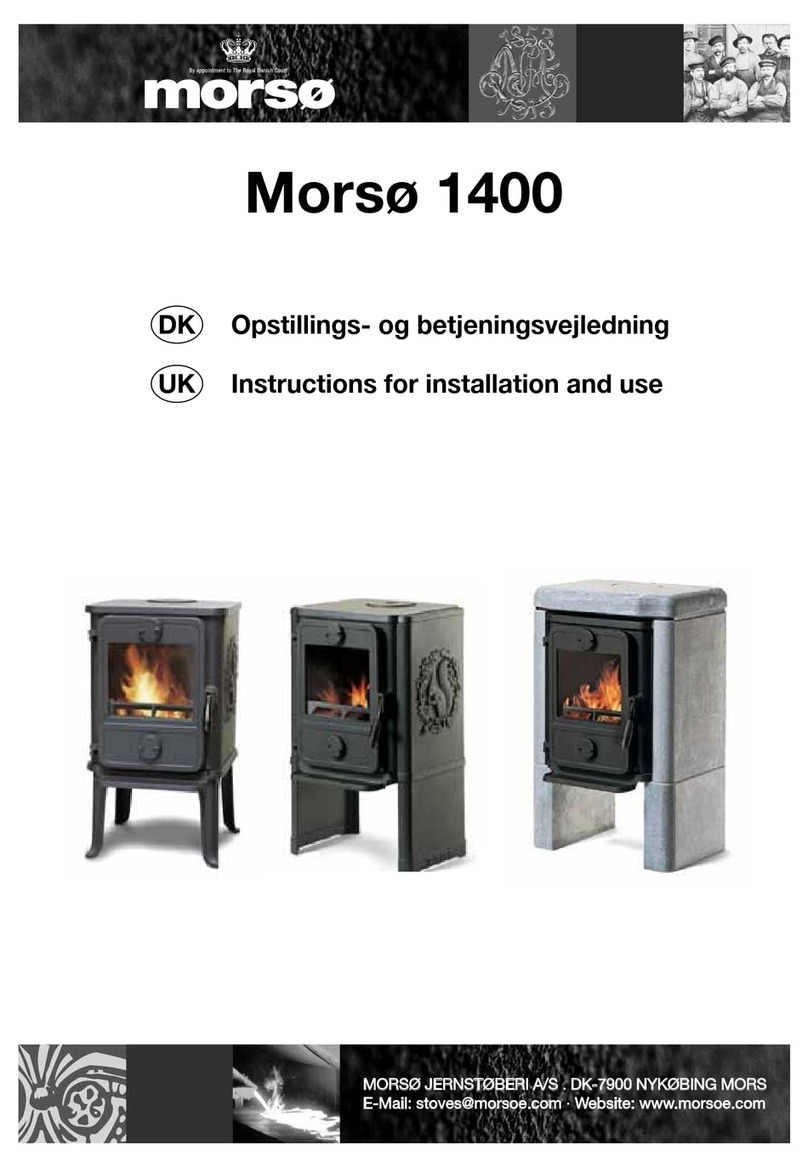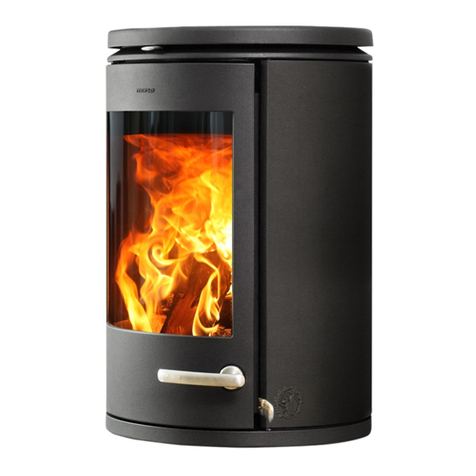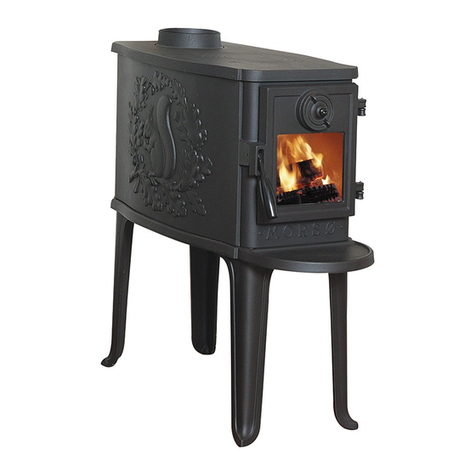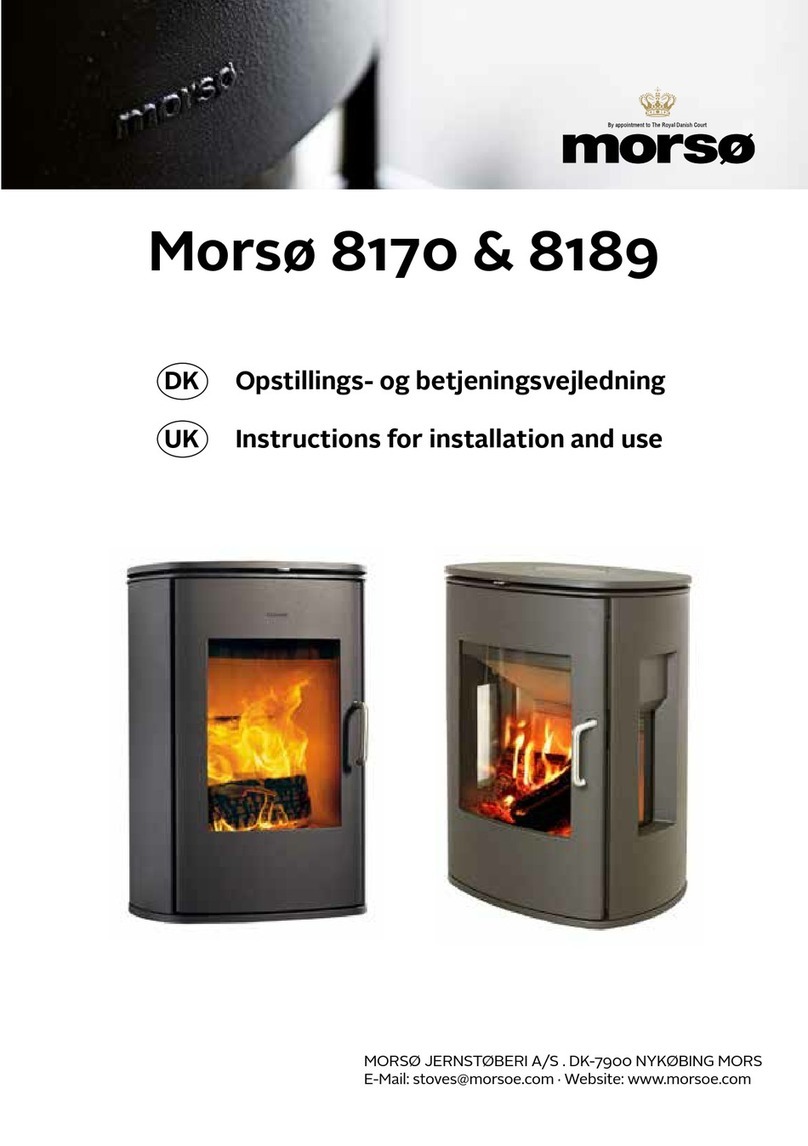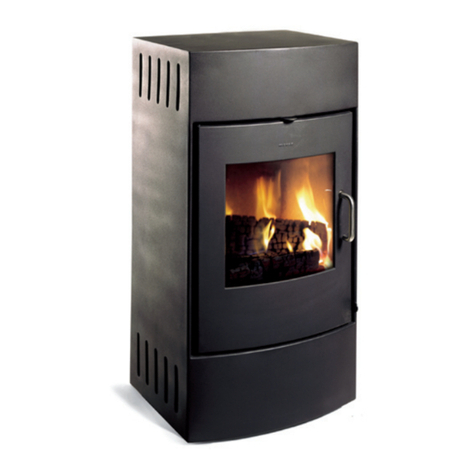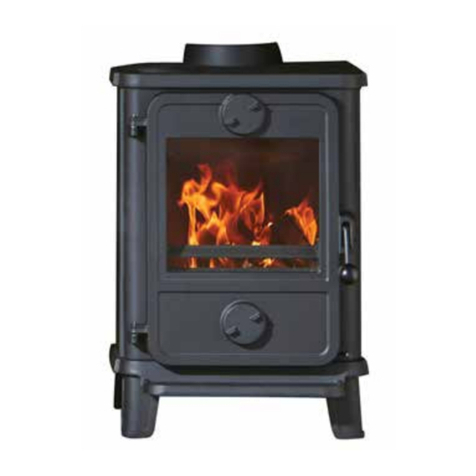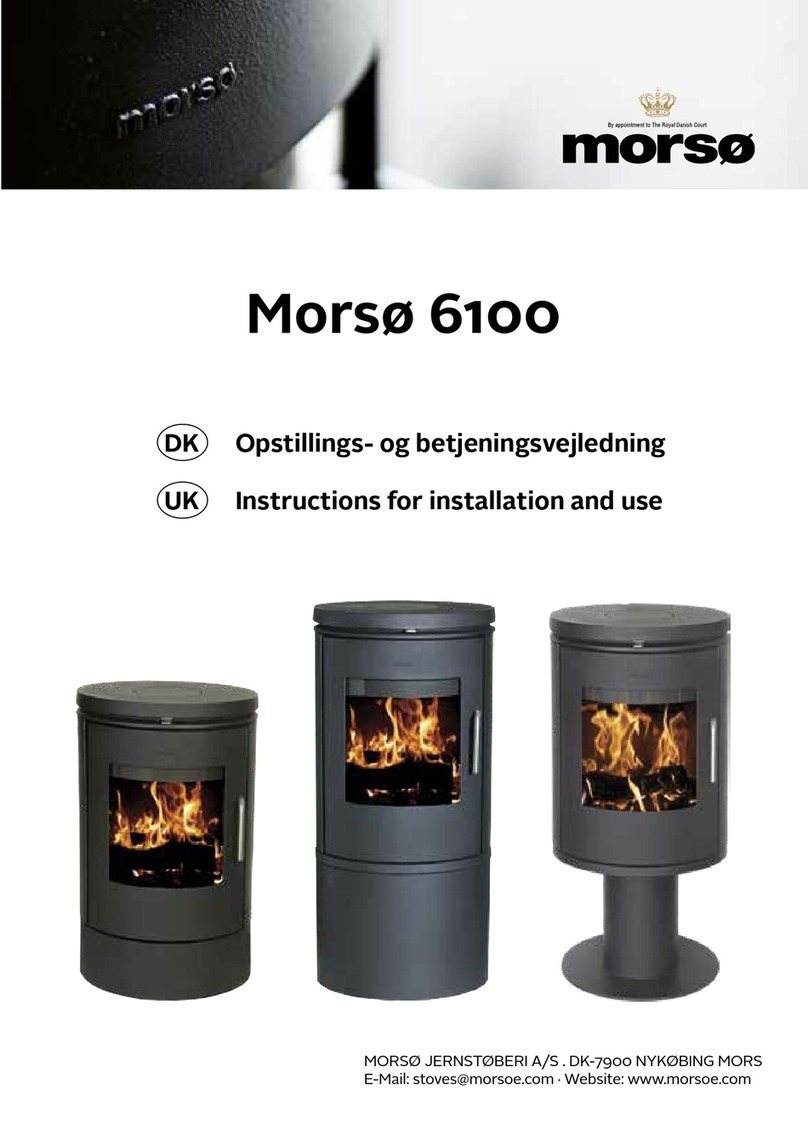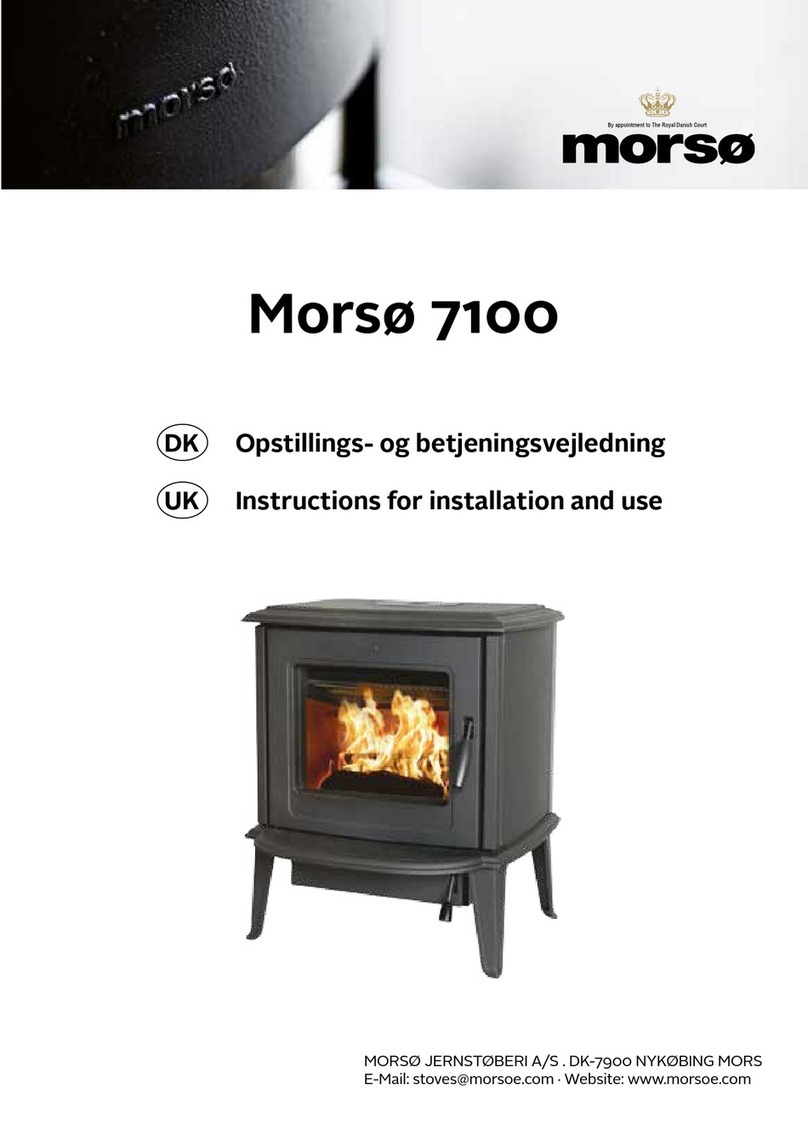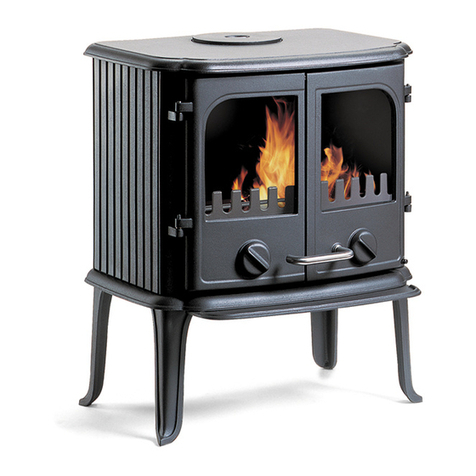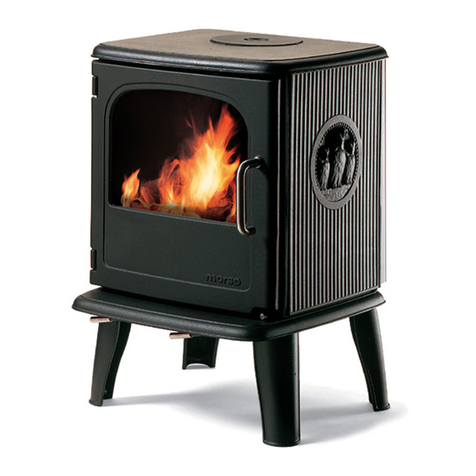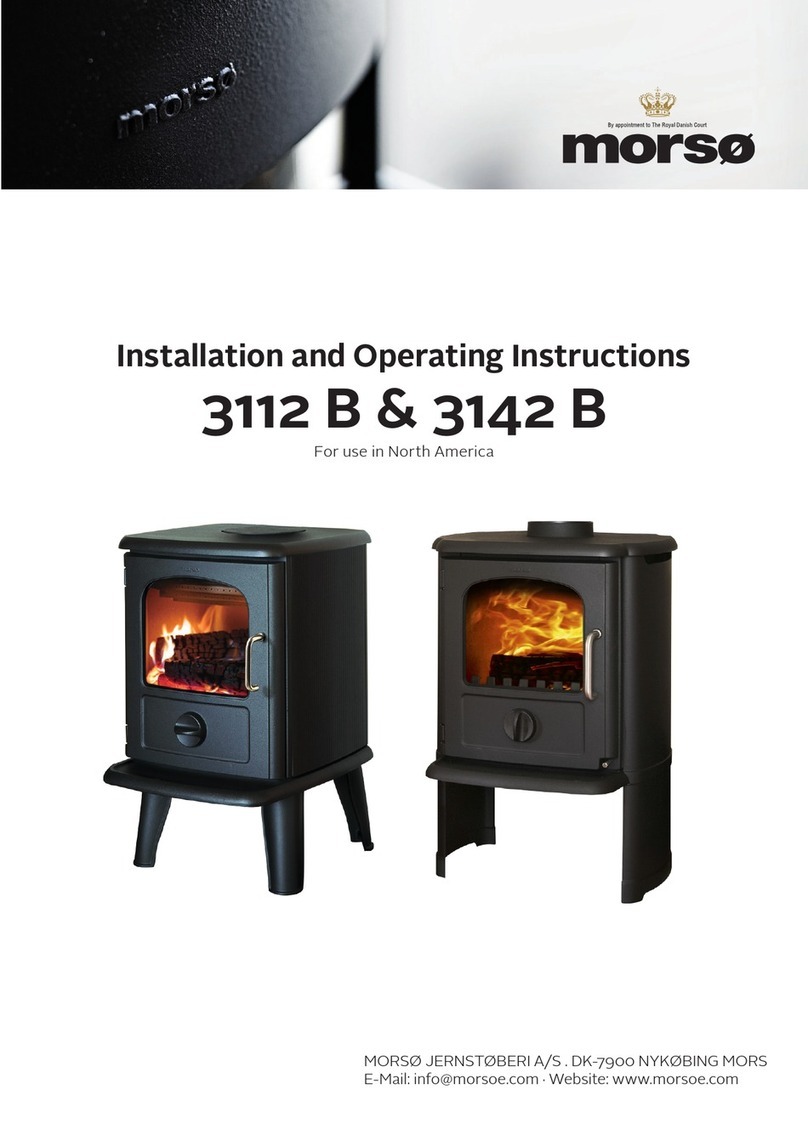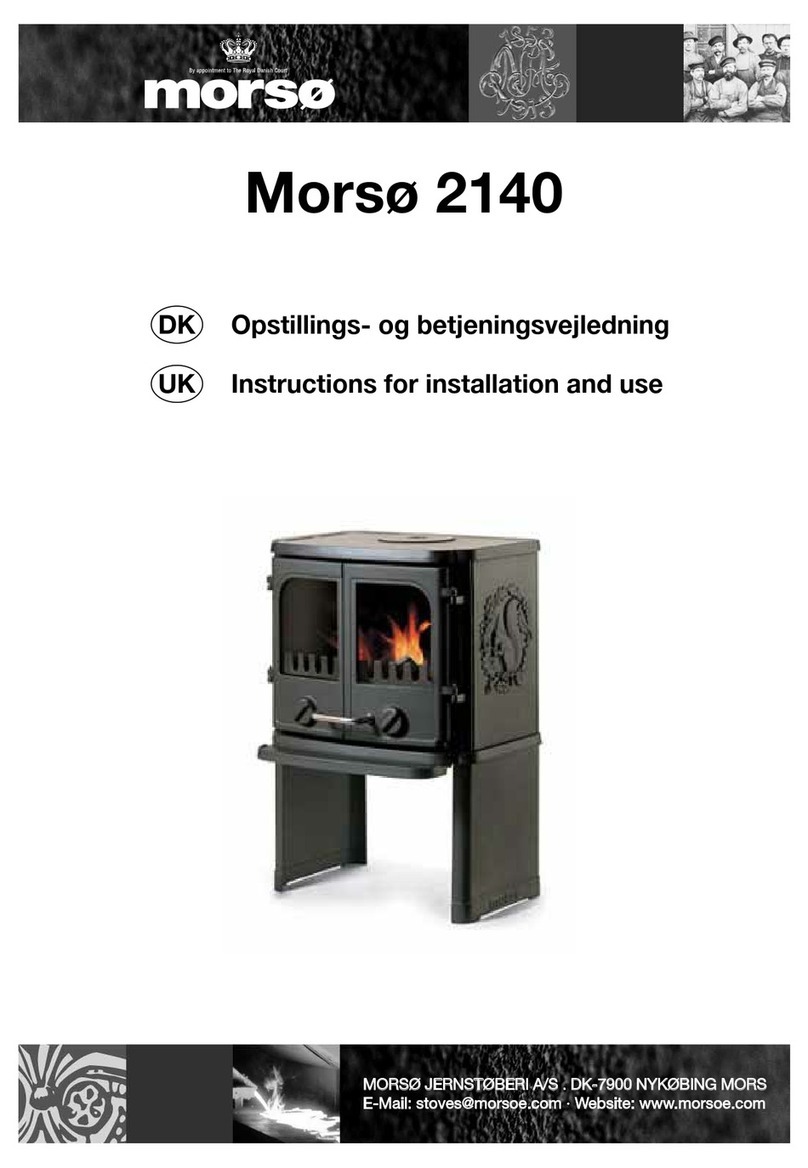
6
7
Sprog Sprog
Af hensyn til varmecirkulation, rengøring og evt. indvendig rensning af ovn, anbefales af-
stand til murværk at være 10-15 cm. Et lag tapet bliver normalt, når det er påsat murværk,
betragtet som ikke-brændbart materiale.
På gulvet
Sker opstillingen på brændbart gulv, skal de nationale og lokale bestemmelser overholdes
med hensyn til størrelsen på et ikke brændbart underlag, der skal dække gulvet under ovnen.
Man bør naturligvis sikre sig, at underlaget kan bære ovnens og evt. stålskorstenens vægt.
Møbleringsafstand
Den anbefalede møbleringsafstand er 1100 mm, men man bør dog vurdere, om møbler og
andet vil blive udtørret af at stå tæt på ovnen.
Afstand til brændbart materiale foran ovnen er 1100 mm. Denne afstand gælder også til
siden på ovne monteret med drejesokkel.
En brændeovn bliver varm under fyring. Der skal derfor udvises en fornøden forsigtighed,
specielt i.f.m. børns kontakt med ovnen.
1.5 Skorstenen
Hvis lokale bestemmelser tillader det, kan ovnen tilsluttes en skorsten, hvortil der i forvejen
er tilsluttet et andet lukket ildsted ( f.eks. en anden brændeovn eller oliefyr ). Men bemærk
at en brændeovn ikke må tilsluttes samme skorsten som nye kondenserende oliefyr. Er De i
tvivl bedes De kontakte Deres skorstensfejer.
Man skal være opmærksom på eventuelle krav til placering af røgrør, hvis to eller ere ild-
steder tilsluttes samme skorsten.
Brændeovnen må aldrig tilsluttes en skorsten, hvor et gasfyr er tilsluttet.
En moderne eektiv ovn stiller større krav til Deres skorsten. Lad derfor skorstensfejeren
vurdere skorstenen.
Skorstenens lysning skal følge de nationale og lokale bestemmelser. Men generelt bør lys-
ningsarealet mindst være 175 cm2 (150 mm diameter) for brændeovne.
En for stor skorstenslysning bevirker, at der bruges for meget energi på at få opvarmet
skorstenen til et acceptabelt træk. Er der tale om en muret skorsten med større lysning,
anbefales det at isætte en isolerende skorstensforing med den rigtige diameter. Herved
opnås et forøget træk og tillige en bedre fyringsøkonomi.
Der stilles ingen krav til nogen bestemt skorstenshøjde, men den skal være så høj, at træk-
forholdene er i orden og røgen ikke generer. Som hovedregel er trækforholdene tilfreds-
stillende, når skorstenen er 4 meter over ovnen og er ført mindst 80 cm over tagrygnin-
gen. Placeres skorstenen ved husets sider bør toppen af skorstenen aldrig være lavere end
husets tagryg eller tagets højeste punkt. Bemærk, at der ofte gælder nationale og lokale
bestemmelser med hensyn til placering af skorstene i forbindelse med stråtag. Se afsnittet
trækforhold 1.9.
Skorsten og røgrør skal forsynes med renselemme. Størrelsen på renselemme i skorsten
skal mindst svare til skorstenens lysningsareal.
Skorstenen skal være tilgængelig for udvendigt eftersyn, og der skal være mulighed for ad-
gang til renselemme og til skorstenen, hvis den skal renses fra toppen (eks. stålskorstene).
1.6 Rørtilslutning
Den øverste støbte topplade løftes af ovnen.
Bemærk den runde støbte dækplade i toppladen skal forblive fastmonteret, hvis ovnen
skal monteres med røgrør bagud og skrues af den øverste topplade, hvis røgrøret ønskes
monteret ovenud.
Montering af røgtud ovenud
Ovnen er fra fabrikken forberedt til montering af den vedlagte røgtud (1) ovenud med ved-
lagte
kuglefang og skruer. Kuglefanget, der skal forhindre at skorstensfejeren ødelægger ov-
nensrøgledeplader under rensning, er den 178 mm lange stang, der er vedlagt.
Montering af røgtud bagud
Ønskes ovnen monteret med røgafgang bagud, afmonteres den runde plade, der er kse-
ret med 2 skruer bag på ovnen. Pladejernsbrikken på den indvendige konvektionsbagplade
slåes ud med små kontante slag med en hammer ud for de små ”broer”, der holder brikken
på plads. Det støbte dæksel ernes fra bagpladen, ved at dreje det mod uret og monteres
på den indvendige topplade, ved at trykke det ned og dreje det med uret. Dækslet kan fun-
gere som rensedæksel og lette adgangen til den årlige rensning af ovnen. Røgtuden cen-
treres og skrues fast på ovnens bag-
side med de vedlagte lus og skruer.
Kuglefanget skal ikke anvendes ved
montering af røgtud bagud.
Placering af røgledeplader
Røgledepladerne (2) og (3), der er
udført i vermiculite, er placeret ved
modtagelsen.
Man skal sikre sig, at røgledepla-
derne er korrekt monteret inden
en optænding af ovnen nder
sted. (se skitse)
Evt. Frisklufttilslutning
Ovnen er fra fabrikken forberedt til
montering af en evt. frisklufttilslut-
ning uaængig af rummet, hvor ovnen
opstilles. Boksen til denne friskluft-
tilslutning, der kan tilkøbes separat, gi-
ver mulighed for en ø100mm rørtilslut-
ning enten bagud eller nedenud.


